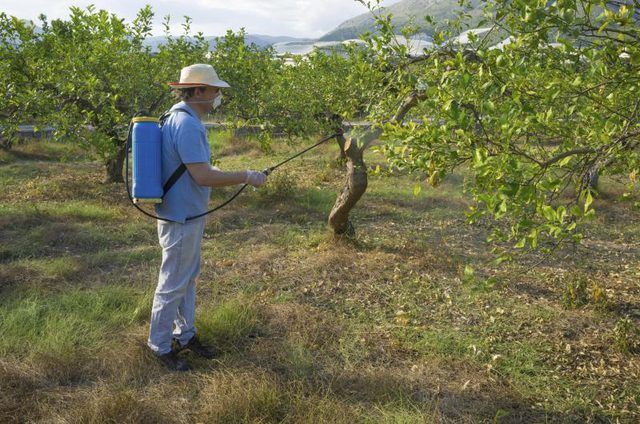Bulbs
Flower Basics
Flower Beds & Specialty Gardens
Flower Garden
Garden Furniture
Garden Gnomes
Garden Seeds
Garden Sheds
Garden Statues
Garden Tools & Supplies
Gardening Basics
Green & Organic
Groundcovers & Vines
Growing Annuals
Growing Basil
Growing Beans
Growing Berries
Growing Blueberries
Growing Cactus
Growing Corn
Growing Cotton
Growing Edibles
Growing Flowers
Growing Garlic
Growing Grapes
Growing Grass
Growing Herbs
Growing Jasmine
Growing Mint
Growing Mushrooms
Orchids
Growing Peanuts
Growing Perennials
Growing Plants
Growing Rosemary
Growing Roses
Growing Strawberries
Growing Sunflowers
Growing Thyme
Growing Tomatoes
Growing Tulips
Growing Vegetables
Herb Basics
Herb Garden
Indoor Growing
Landscaping Basics
Landscaping Patios
Landscaping Plants
Landscaping Shrubs
Landscaping Trees
Landscaping Walks & Pathways
Lawn Basics
Lawn Maintenance
Lawn Mowers
Lawn Ornaments
Lawn Planting
Lawn Tools
Outdoor Growing
Overall Landscape Planning
Pests, Weeds & Problems
Plant Basics
Rock Garden
Rose Garden
Shrubs
Soil
Specialty Gardens
Trees
Vegetable Garden
Yard Maintenance
How to Spray Fruit Trees With Dormant Oil
How to Spray Fruit Trees With Dormant Oil. All too often, fruit trees spend their winter dormancy as hibernation chambers for insect eggs and larvae. Come spring, these unwanted guests awaken to do their dirty work. Often reproducing at an astonishing rate, they feed on and weaken the trees and potentially ruin the fruit harvest. Dormant oils are...

All too often, fruit trees spend their winter dormancy as hibernation chambers for insect eggs and larvae. Come spring, these unwanted guests awaken to do their dirty work. Often reproducing at an astonishing rate, they feed on and weaken the trees and potentially ruin the fruit harvest. Dormant oils are designed to fight these pests, but applying them effectively requires careful timing and the right weather.
Understanding Dormant Oil
Dormant oils are refined petroleum or cottonseed oils mixed with emulsifier so they remain suspended in water. The heavy oils of early formulas were restricted to use on dormant trees because they damaged the leaves and flowers of actively growing ones. Improved refining techniques have produced oils safe for year-round use; these are referred to as dormant, horticultural, ultrafine or summer oils. All dormant oils seep into bark cracks and crevices, where they suffocate overwintering insects and eggs or penetrate the pests' protective cuticles and dehydrate them. Different brands target different pests, but spider mites, whitefly larvae and scale eggs are prime dormant oil targets.
Timing the Application
A fruit tree's dormant period has three stages. In the fully dormant stage, the flower buds along its branches have no green tissue. In the green tip stage, the leaves of the flower buds show from 1/8 to 1/4 inch of green. During the delayed dormant stage, visible green tissue increases to 1/4 to 1/2 inch. Each brand of commercial oil has it own recommendations on when to spray for specific pests on specific varieties of trees, and you should follow them. As a general rule, the University of Tennessee Extension suggests spraying in the delayed dormancy stage, when the insects are becoming active. The conditions that awaken fruit trees from dormancy vary from region to region and year to year. Rely the flower buds, not the calendar, to tell you when to spray.
Preparing to Spray
Wait for a clear day with 45 to 65 percent humidity, a temperature of 40 to 70 degrees Fahrenheit and no frost expected while the oil dries over the next three to four days. Water the trees well, and cover nearby annual flowers so drifting spray doesn't kill them.
Mixing the Solution
In a pressurized tank sprayer, mix a solution containing the label's specified amounts of oil concentrate and water. The strength of the solution varies by brand, tree variety and target insect, but a 2 to 3 percent solution containing 5 to 7 1/2 tablespoons of oil concentrate to 1 gallon of water is common. Expect to use 1 gallon of solution for each 1 foot of tree height.
Spraying the Trees
Dress in protective clothing, including long pants, a long-sleeved shirt, chemical-proof gloves, safety goggles and a respiratory mask. Spray the fruit trees until their trunks, limbs and branches are completely wet. To keep the oil suspended, stop every few minutes and shake the tank. Keep people and pets out of the surrounding area while you spray and until the oil dries. Repeat at the label's suggested intervals.